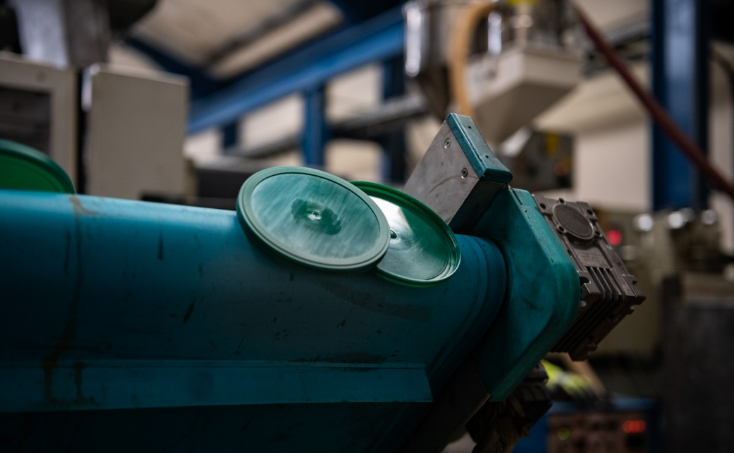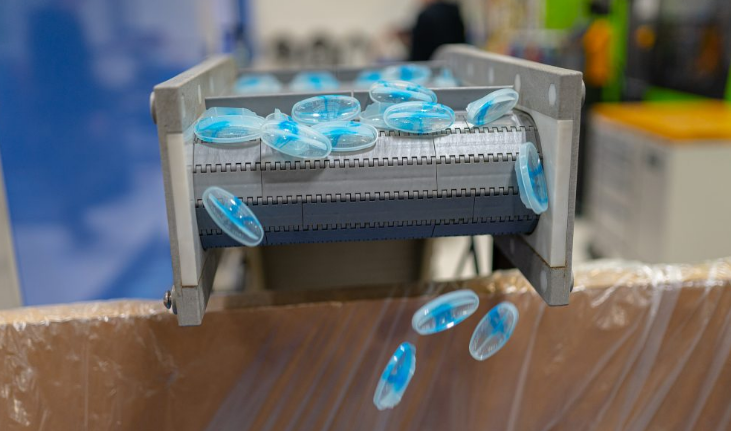Yes, injection molding can use recycled materials, including plastics, to produce various parts.
Overview of Injection Molding with Recycled Materials
Injection molding is a manufacturing process widely used for producing parts by injecting molten material into a mold. It’s primarily used in mass-production processes where the same part is being created thousands or millions of times in succession. The process can be applied to a variety of materials, including plastics, metals (known as die-casting), glasses, and recently, recycled materials.

Definition and Basics of Injection Molding
Injection Molding Process: The process involves melting the raw material and injecting it into a mold cavity. Once the material cools and solidifies, it conforms to the shape of the mold. Injection molding is known for its high production speed and efficiency. The typical cycle time can range from a few seconds to a few minutes, depending on the complexity and size of the part.
Machine Specifications: The power required for an injection molding machine can vary significantly. Smaller machines may use about 5 kW of power, whereas larger machines can require up to 4000 kW. The cost of these machines also varies, with small ones costing as little as $25,000 and larger ones exceeding $1,000,000.
Types of Recycled Materials Suitable for Injection Molding
Material Selection: When it comes to recycled materials, not all types are suitable for injection molding. Commonly used recycled materials include PET (polyethylene terephthalate), HDPE (high-density polyethylene), and PVC (polyvinyl chloride). These materials need to have certain qualities like uniformity in material properties, adequate flow characteristics, and stability upon reheating.
Quality and Cost Implications: The quality of recycled materials can vary, which might affect the final product’s strength and appearance. However, using recycled materials can reduce material costs by up to 50% compared to virgin plastics. The environmental value of using recycled materials also adds to the overall appeal of this method.
For more detailed information, you can refer to the Injection Molding and Recycled Materials pages on Wikipedia.
Benefits of Using Recycled Materials in Injection Molding
Using recycled materials in injection molding offers significant benefits, ranging from environmental advantages to cost savings and enhanced material properties. These advantages are crucial in today’s market, where sustainability and cost-effectiveness are highly valued.
Environmental Impact Reduction
Reduced Carbon Footprint: Utilizing recycled materials significantly lowers the carbon footprint associated with production. It’s estimated that using recycled plastics can reduce energy consumption by 50-88% and greenhouse gas emissions by 30-75%, depending on the material type.
Conservation of Resources: The use of recycled materials in injection molding contributes to conserving natural resources. For every ton of recycled plastic used, we save approximately 16 barrels of oil, a non-renewable resource.
Cost-Effectiveness Analysis
Lower Material Costs: Recycled materials can be up to 40% less expensive than virgin materials. This reduction in cost is due to the lower energy requirements in processing recycled materials as opposed to producing new raw materials.
Efficiency in Production: Injection molding machines process recycled plastics with similar efficiency to virgin plastics. This efficiency ensures that there is no significant decrease in production speed, keeping throughput high and operational costs low.
Quality and Durability of Recycled Materials
Comparable Quality: Modern recycling processes have greatly improved, allowing recycled plastics to achieve qualities similar to virgin materials. Products made from recycled plastics can exhibit nearly the same strength, durability, and versatility.
Material Longevity: Products manufactured from recycled materials can have a lifespan comparable to those made from new materials. This longevity ensures that using recycled plastics does not compromise product life or functionality.
For further information, visit the Recycling and Injection Molding pages on Wikipedia for more insights into these processes.
Challenges in Using Recycled Materials for Injection Molding
While using recycled materials in injection molding brings numerous benefits, it also presents several challenges that must be addressed for effective implementation. These challenges include ensuring material consistency, overcoming technical difficulties, and dealing with market availability issues.

Material Consistency and Quality Control
Variability in Material Properties: Recycled materials often exhibit variability in properties such as strength, color, and melt flow index. This variability can lead to inconsistent product quality if not properly managed.
Quality Control Measures: Stringent quality control is essential. This might involve advanced sorting and processing techniques, which can increase operational costs. For instance, implementing spectroscopy-based sorting can add up to 30% more to the processing cost.
Technical Challenges in Processing Recycled Materials
Adjustments in Machine Parameters: Injection molding machines may require adjustments when processing recycled materials. These adjustments might include changes in temperature settings, injection speed, and pressure to accommodate the different melting characteristics of recycled plastics.
Increased Wear on Machinery: Recycled materials can be more abrasive than virgin materials, leading to faster wear and tear on machinery. This can result in increased maintenance costs, potentially up to 20% higher than when using virgin materials.
Market Availability and Sourcing Issues
Inconsistent Supply: The availability of high-quality recycled materials can be inconsistent, making it challenging to maintain steady production schedules. The cost of recycled materials can fluctuate significantly, depending on supply and demand dynamics.
Competition for Resources: With the growing demand for sustainable materials, competition for recycled plastics has increased. This competition can drive up prices, making it less cost-effective for some manufacturers.
For additional information, the Recycling and Injection Molding Wikipedia pages offer more insights into these topics.
The application of recycled materials in injection molding has seen various successful examples and innovative approaches. These cases demonstrate the potential and efficiency of recycled materials in comparison to traditional practices.
Successful Examples of Injection Molding with Recycled Materials
| Company/Project | Materials Used | Product | Benefits | Challenges Overcome |
|---|---|---|---|---|
| Eco-Friendly Toys Inc. | Recycled HDPE | Children’s Toys | Reduced material costs by 30%, Lower carbon footprint | Color inconsistency resolved with advanced sorting |
| Green Packaging Co. | Recycled PET | Food Containers | Enhanced material strength, 20% cost savings | Overcame food safety concerns with rigorous quality checks |
Innovative Approaches in Recycling for Injection Molding
| Innovation | Description | Impact | Cost Implications |
|---|---|---|---|
| Chemical Recycling | Breaks down plastics to their molecular level | Higher quality recycled material, Opens more recycling possibilities | Initial setup cost is high, but reduces long-term operational costs |
| Smart Sorting Systems | Uses AI and machine learning for sorting | Improved material consistency, Efficient processing | High initial investment but reduces labor costs by 25% |
Comparison with Traditional Injection Molding Practices
| Aspect | Traditional Injection Molding | Injection Molding with Recycled Materials |
|---|---|---|
| Material Cost | Higher due to use of virgin materials | Lower due to recycled materials |
| Environmental Impact | Higher carbon footprint | Significantly reduced carbon footprint |
| Production Efficiency | High, with established processes | Comparable, with adjustments in machine settings |
| Product Quality | Consistent with known parameters | Can vary, but advancements are improving consistency |
These case studies and innovations highlight the growing trend of using recycled materials in injection molding. They offer a glimpse into the future where sustainable practices can be integrated into manufacturing without compromising on quality or efficiency.
For more detailed information on these topics, you can refer to the Wikipedia pages on Injection Molding and Recycling.




